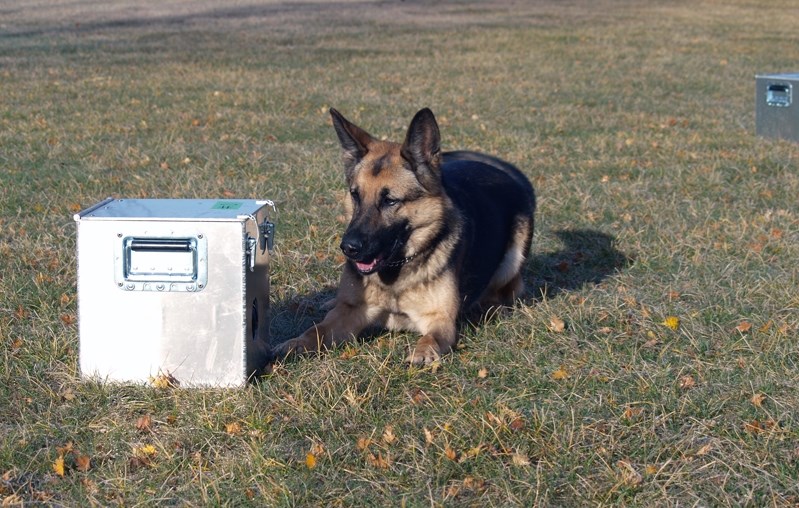INNISFAIL – The first teams of police dogs and their handlers able to detect human remains have graduated at the RCMP Police Dog Service Training Centre.
They now have the tools to crack historical missing persons cases that have stumped law enforcement agencies for many years. As well, it will have the vitally important benefit of giving bereaved families relief to finally move forward with their lives.
Sgt. Rob Heppell, a trainer for both handlers and dogs at the Innisfail-area training centre, said four teams have been training since Oct. 11. By Nov. 22 all four will are expected to graduate from the Human Remains Detection program.
He said two canine teams – Staff Sgt. Joel Leblanc, of Surrey, B.C. and two-year-old female canine partner Henny, along with Const. Brian Venoit, of the Halifax RCMP detachment, and his five-year-old male canine partner Doc - graduated on Nov. 3. A third team will graduate on Nov. 7, with the fourth expected to finish on Nov. 22.
Heppell said the program was created “out of demand and necessity” for both historical and current investigations.
“There was a political will to introduce this investigation tool that was not available to us in the past,” he said.
Heppell said experienced handler dog teams were selected that already had expertise in searching assignments. He said the focus of the new training program was to introduce the dogs to the unique scent signature of human decomposition.
To perfect the dogs' scenting skills for the new program, donated human remains were used through the cooperation of the Nova Scotia Medical Examiner Service.
“It was actually very easy to introduce this profile and get them to be proficient,” he said. “But mostly it is the result of dealing with experienced teams, both handlers and dogs.
“We had an accelerated learning curve for the teams and their ability to become proficient in the profile was very rapid,” said Heppell.
He said the training relied on scientific advances that showed there were differences between the scent signatures of animals and humans.
“Scientists have discovered there are a number of what they call volatile organic compounds (VOC) that are present in decomposition but there is a select few that are dedicated to human decomposition,” said Heppell. “Although they may share some components with animal decomposition, the percentages and types of VOCs that are present are unique to human decomposition. So this will actually give us the opportunity to focus our dogs strictly on human decomposition.”
He said the new investigative tools for the teams will finally open the door to evidence that eluded police for years, even decades.
“As long as there is a level of decomposition present (and) as long as the environment is conducive to decomposition then it will be detectable for the dogs,” said Heppell. “So for historical investigations this will be a tool that can be used to potentially collect evidence that would be otherwise missed.”
Sgt. Rob Heppell, a trainer at the RCMP Police Dog Service Training Centre
"There was a political will to introduce this investigation tool that was not available to us in the past."




